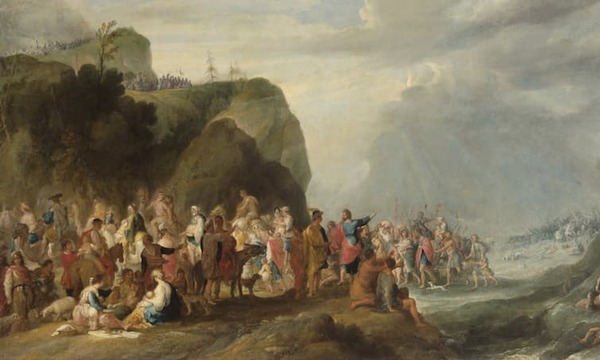Have you taken the Wal-Mart test? If not, it is time to do so. One day this week drive to the Wal-Marts in a twenty-mile radius of your church, and see who is shopping there. If you do not have a Wal-Mart in your community, drive to a local mall and check out the people walking around inside. What you find may surprise you. The United States is dramatically more diverse than it was only ten years ago, a fact often missed by church leaders.
While most of us have carried on with work, family, and various other activities during the last decade, the United States has changed. Reports from the recent census show that the United States of American is more diverse from the bottom up. Growth of ethnic people's is observable in nearly every state from Minnesota to California, from Idaho to Texas, and from Florida to Montana. For example, twelve percent of Minnesota's population were minorities ten years ago, but has risen to seventeen percent today.
According to Minnesota State demographer Tom Gillaspy, “80% of the state's population growth since 2000 is attributable to minorities.” The black population grew 59%, Hispanics are up 75%, and Asians increased 51% during the last decade in Minnesota. For the first time ever, Hispanics surpassed whites in New Mexico. Non-Hispanic whites represent 40.5% of New Mexico's population today, with 46.3% being Hispanic, according to recent census data.
Changes in the patterns of ethnicity are part of a larger growth trend that sees the western United States surpassing the Midwest in population. “Will it play in Peoria?” was a common refrain in the 1960s that referenced that area of the country as the mainstream US population. For marketers and politicians, if something was accepted by the Midwesterners, they knew it would also be accepted by the mainstream population elsewhere. Over the last decade, the center of US population has shifted from Illinois to around Texas County, Missouri. Peoria, Arizona, a suburb of Phoenix, is now larger than Peoria, Illinois. “Will it play in Peoria?” now makes most sense with thinking of Peoria, AZ. The new ethnic marketplace is challenging
The fact that new immigrants were coming to America was captured by TIME the week of July 8, 1985 which carried the cover story “IMMIGRANTS: THE CHANGING FACE OF AMERICA.” The special issue was the largest in TIME's history at that time, with over eighty editorial pages. The challenge of ethnic and cultural change led TIME to publish another special issue just eight years later in the fall of 1993. The magazine bore the lead title “THE NEW FACE OF AMERICA: How Immigrants Are Shaping the World's First Multicultural Society.” To illustrate the new face of American, particularly the impact of intermarriage, TIME's managing editor commissioned the drawing of a computer image by morphing together the images of seven men and seven women of different ethnic backgrounds. After sixty-five hours on the computer using a complicated formula, the picture of a woman was created that was reportedly 15% Anglo-Saxon, 17.5% Middle Eastern, 17.5% African, 7.5% Asian, 35% Southern European, and 7.5% Hispanic. The picture was used on the magazine's cover. Uniting ethnic peoples into a unified whole proved to be easier on a computer than in real life, however. TIME's writers wrote articles on the public's growing resistance to immigration (“Not Quite So Welcome Anymore”), the rise of illegal aliens (“The Shadow of the Law”), the impact of immigrants on arts (“The Art of Diversity”), the challenge of legal justice in a multiethnic society (“Whose Peers?), and the growing conflict of different religions (“One Nation Under Gods”). Some leaders, like the late Ralph Winter, saw the future opportunity for mission. He commented, “In the next five years, we are going to witness this century's greatest single mutation in the structure of missions. As a result, missions will no longer be viewed as something we simply do overseas, but something we do within groups of unreached peoples, whether those groups are located in Singapore or Los Angeles.” Unfortunately, even though mission leaders, like Winter and others, called for churches in the USA to respond, most refused to see the opportunities for mission that the new immigrants brought with them.
Without doubt, the face of the USA has changed and is continuing to change. The new ethnic marketplace is forcing government, business, and churches to rethink how to speak the language and adopt the culture of the new multiethnic and multicultural people's found in the USA.
Have you observed ethnic change in your community? If so, how is your church responding to the challenge of making disciples of all peoples?
 Biola University
Biola University
.jpg)

.jpg)
.jpg)